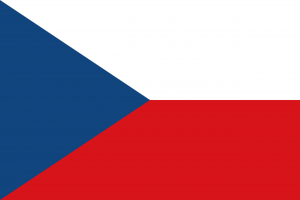Language/Czech/Grammar/How-to-Use-Be
Hi Czech learners! 😊
In this lesson, we will focus on the verb "to be" in Czech which is "být". This verb is very important as it is widely used in everyday conversations. By the end of this lesson, you will be able to use "být" correctly and you will learn interesting facts about the Czech Republic. Don't forget to use Grammar page and practice with native speakers of Czech.
Conjugation of "být"
First, let's learn the present tense of "být" in Czech. Here's the conjugation:
| !Singular | Plural | English | |
|---|---|---|---|
| 1st person | jsem | jsme | I am, we are |
| 2nd person | jseš, jsi | jste | you are, you all are |
| 3rd person | je | jsou | he/she/it is, they are |
For example, "Já jsem v Praze." means "I am in Prague," "Ty jsi student." means "You are a student," and "Oni jsou Češi." means "They are Czechs."
The Difference Between "Je" and "Jsou"
In English, "is" is used for the third person singular (he, she, it), and "are" is used for the third person plural (they). However, in Czech, "je" is used for both third person singular and third person plural when the subject is masculine, feminine or neuter singular, for example "Ona je studentka" (She is a student), "On je student" (He is a student), "To je jablko." (It is an apple).
On the other hand, "jsou" is used for the subject when it is in the third person plural, for example, "Oni jsou v parku." (They are in the park).
The Negative Form
To form a negative sentence in Czech, place "ne" before the verb.
For example:
- "Jsem student." (I am a student.) --> "Nejsem student." (I am not a student.)
- "Jsou v parku." (They are in the park.) --> "Nejsou v parku." (They are not in the park.)
Questions with "Být"
To form a question with "být", inverting the subject and the verb is not necessary in Czech. All you need to do is to add a question mark at the end.
For example:
- "Jsi tady?" (Are you here?)
- "Je to tvoje auto?" (Is it your car?)
Cultural Tidbits
Did you know that the Czech Republic is famous for its beer? The country boasts the highest beer consumption per capita in the world, and one of the most popular brands is Pilsner Urquell.
Also, Franz Kafka is a famous Czech author who wrote in German. He was born in Prague in 1883 and his most famous works include "Metamorphosis" and "The Trial."
Dialogue
Petra and David are talking about the weather:
- Petra: Venku je krásně slunečno. (It's beautifully sunny outside.)
- David: Jo, je. Ale je nějak zima, ne? (Yeah, it is. But it's chilly, isn't it?)
- Petra: Je, je zima. (Yes, it's chilly.)
- David: Anebo já jsem prostě citlivý na chlad... (Or maybe I'm just sensitive to the cold...)
- Petra: To může být. (That could be.)
Conclusion
In this lesson, you have learned the conjugation of the verb "být" and how to use it in a sentence. You have also learned how to form questions and negative sentences. Remember to practice using "být" with native speakers on Polyglot Club.
Don't forget to check out interesting facts about Czech Republic and keep practicing! 😊
➡ If you have any questions, please ask them in the comments section below.
➡ Feel free to edit this wiki page if you think it can be improved. 😎
Related Lessons
- Possessive Case in Czech
- Verbs
- Present Continuous in Czech
- Plural
- How to use the Modal Verb (Can)
- Questions
- Conditional Mood
- Gender
- Nominative Case in Czech

